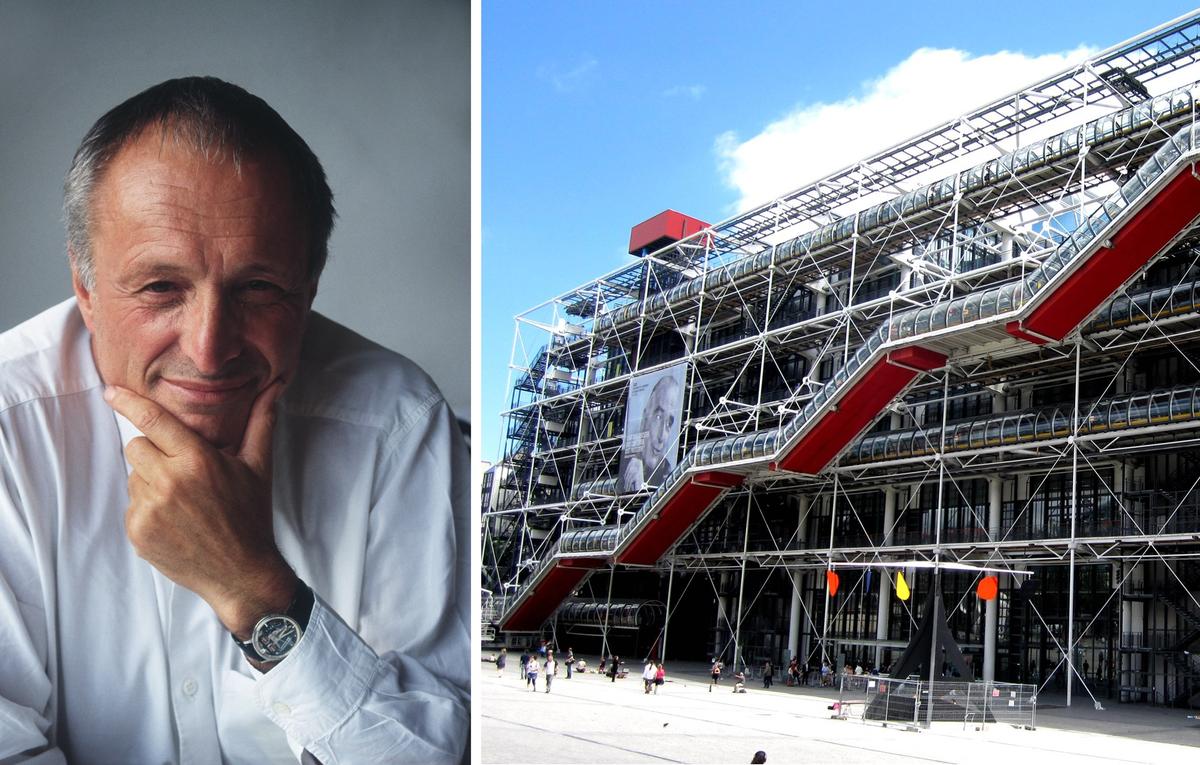Richard Rogers, the architect who co-designed the Centre Pompidu in Paris, has died, aged 88. His son, Roo Rogers, confirmed the death, according to the New York Times. The Pompidou, often seen as a template for modern museum spaces, opened on 31 January 1977. Rogers conceived the design, which looked like the building had been turned inside out, with the Italian architect Renzo Piano.
"With the death of Richard Rogers, the world loses one of its greatest architects," said Laurent Le Bon, the president of the Centre Pompidou, in a statement. "It is thanks to their creative genius [Rogers and Piano] that the Centre Pompidou has maintained its exuberant vitality for almost 45 years. They were happy to say that they had not created a monument but a place of celebration, a large urban plaything—the utopia continues! Thank you Lord Richard Rogers of Riverside."
Rogers studied for a diploma at the Architectural Association School of Architecture between 1954 and 1959. He graduated with a Masters degree in architecture from Yale School of Architecture in 1962. His other well-known designs include the Senedd parliament building in Cardiff, Wales, and the Millennium Dome, now the O2 Arena in east London. In 2009, he resigned from his role as advisor to the then Mayor of London, Boris Johnson, reportedly because he was frustrated with the lack of action over a plan to improve public spaces in the capital.
“I think we were just making the building we had to: a loose container, a great big piazza, and a facade; a cross between Times Square and the British Museum.”
In 2017, Rogers told the Observer that he would never “dream of doing it now [Centre Pompidou]”, describing the backlash sparked by the futuristic concept (the artist Sonia Delaunay announced that she would rather burn her paintings than see them in the space). Asked if he thought the concept was revolutionary, he said: “I think we were just making the building we had to: a loose container, a great big piazza, and a facade; a cross between Times Square and the British Museum.”
According to the Guardian, Piano said: “After decades of museums being dusty, boring and inaccessible, someone had to run away, to do something different, have a sense of participation. Someone had to express that rebellion. Putting this spaceship in the middle of Paris was a bit mad but an honest gesture.”
When Rogers won the prestigious Pritzker Prize in 2007, the jury praised him for having “revolutionised museums, transforming what had once been elite monuments into popular places of social and cultural exchange, woven into the heart of the city”.
The Louvre paid tribute to Rogers in a statement, saying: “His architectural firm, Rogers Stirk Harbor + Partners, created in 2019 the Louvre Conservation Centre in Liévin (Hauts de France), an understated and elegant building that integrates into the landscape and is environmentally friendly.” The vast new storage and conservation centre in Liévin, which will house around 250,000 objects by 2023, will be open only to curators and researchers.
Axel Ruger, the secretary and chief executive of the Royal Academy of Arts in London, also posted a tribute to Rogers who was a Royal Academician. “In memory of a great architect and kind and generous man,” Ruger said on Instagram.


